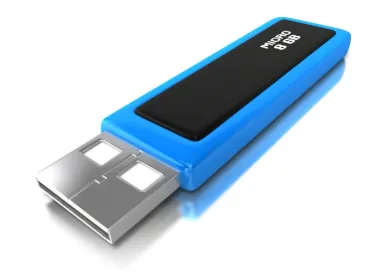Addressing the question of whether claims covering a particular type of USB plug would have been obvious, the Patent Trial and Appeal Board (PTAB or Board) found the claims to be unpatentable, concluding that while one asserted obviousness combination failed to satisfy the claims as construed, two other references could be properly combined to render all challenged claims obvious. PNY Techs., Inc., v. Phison Electronics Corp., IPR2013-00472 (PTAB, Feb. 2, 2015) (Turner, ALJ).
PNY filed a petition requesting inter partes review (IPR) of certain claims in Phison’s patent on a particular form of USB plug that uses concave props to fix a printed circuit board in place within the plug. The Board instituted review and later added additional claims after PNY filed a second request. After briefing and a hearing, the Board issued its decision finding all claims unpatentable.
The Board first addressed claim construction of the concave prop term and, in light of Phison’s continued dispute, partially amended the construction it had earlier adopted. The Board concluded that Phison had disclaimed concave recesses that had been “filled-in” due to arguments it made during the proceedings. However, the Board rejected Phison’s further position that the prop had to not merely support the printed board, but rather had to separate it from the housing, pointing to language in the claims reciting that feature.
Turning to the prior art, the Board found the first combination to be insufficient in light of its amended construction.
However, as for the second obviousness combination, the Board concluded that the primary reference disclosed the claimed concave props, but involved an integrated circuit rather than the claimed printed circuit board. Yet the Board agreed with PNY that it was a mere substitution of a well-known type of circuit configuration to modify the primary reference with a second reference that taught the use of printed circuit boards.
The Board rejected Phison’s argument that the primary reference lacked the claimed props because additional means were involved to secure the board in place, concluding that the “comprising” language of the claims meant that the props need not act alone to fix the board in place. The Board likewise rejected Phison’s argument that the combination would have only loosely held the printed board and instead agreed with PNY that fixing merely requires maintaining the module in place and does not require that removal be prevented.
Finally, the Board rejected Phison’s argument that the primary reference taught away from using a printed board because it identifies a goal of lowering costs, whereas according to Phison the use of a printed board would raise costs. The Board did not believe that Phison had established that printed boards were more expensive and, in any event, held that the preferences in the reference did not amount to teaching away because they did not criticize, discredit or otherwise disparage the claimed solution.




 />i
/>i

